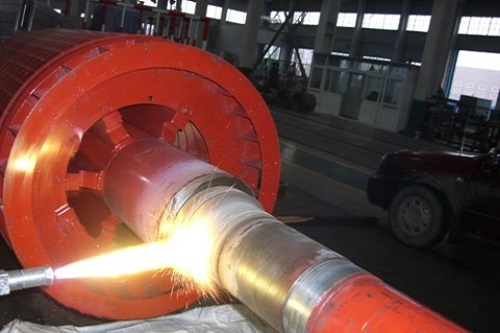E-waste is in Urgent Need of Green Recycling
Introduction to E-Waste
In the 21st century, electronic waste, or e-waste, has emerged as a formidable environmental challenge, spurred by the rapid technological advancements and the consequent proliferation of electronic devices. Every year, millions of tons of outdated or broken electronic gadgets, from smartphones and laptops to large home appliances, are discarded globally. These devices become a source of e-waste, cluttering landfills and posing significant threats to environmental and public health. The lifecycle of electronic products has dramatically shortened due to technological innovations and consumer demand for the latest models, exacerbating the e-waste crisis. Recognizing the urgency of the situation, it is crucial to understand the composition of e-waste, the hazards it poses, and the invaluable resources it contains, which underscore the pressing need for effective and sustainable recycling solutions.

Composition and Dangers of E-Waste
E-waste is not just a growing mountain of discarded electronic items; it's a complex amalgamation of hazardous substances and valuable materials. Common electronic devices such as mobile phones, computers, and televisions contain toxic elements like lead, chromium, mercury, and cadmium. These substances pose severe risks to environmental health and human safety if not properly managed. For example, lead and mercury can leach into groundwater from landfills, contaminating drinking water supplies and causing widespread health issues, including neurological damage and kidney failure.
Despite these dangers, e-waste also holds significant economic value due to its content of precious metals like gold, silver, and copper—often referred to as 'urban minerals'. For instance, it's estimated that recycling a million cell phones can recover approximately 24 kg of gold, 250 kg of silver, and more than 9,000 kg of copper. This "hidden treasure" in e-waste not only presents a lucrative opportunity for resource recovery but also reduces the need for mining new materials, thereby alleviating further environmental impact.
Global Efforts in E-Waste Recycling
Globally, the approach to e-waste recycling varies significantly, with developed nations often leading the way in efficient and environmentally friendly strategies. European countries, for example, have set the standard with comprehensive e-waste management systems. In Germany, over 45% of e-waste is successfully reclaimed through well-organized channels, including large municipal recycling stations, environmental company facilities, and electronics retailers that facilitate easy recycling for consumers.
Similarly, countries like Sweden and the Netherlands have developed advanced systems that recycle e-waste and focus on recovering precious materials, ensuring minimal environmental impact. These systems are supported by stringent EU regulations that mandate the responsible disposal and recycling of electronic goods.
In contrast, e-waste management is still evolving in many developing countries, where informal recycling practices can lead to significant health and environmental problems. These countries face challenges due to a lack of infrastructure, regulatory frameworks, and public awareness about the hazards of improper e-waste disposal.
Despite these disparities, there is a growing international push towards enhancing global e-waste management practices. Initiatives like the Global E-Waste Statistics Partnership seek to improve data collection and reporting to inform policy and operational decisions better, ensuring a more coordinated and effective global response to e-waste challenges.
Extended Producer Responsibility in E-Waste Management
The concept of Extended Producer Responsibility (EPR) is pivotal in promoting sustainable e-waste recycling. EPR shifts the responsibility for end-of-life product disposal from consumers and municipalities to the manufacturers themselves, encouraging them to design products that are easier to recycle and less harmful to the environment. This policy approach not only incentivizes producers to reduce waste but also facilitates the recovery of valuable materials, reducing the environmental impact associated with new product manufacturing.
Several leading technology companies have taken significant steps under the EPR framework to enhance their recycling efforts. For instance, companies like Dell and HP have developed robust take-back systems that allow consumers to return used electronics for recycling at no additional cost. These programs not only ensure safe and efficient recycling processes but also foster consumer loyalty and trust.
Apple's initiatives are particularly noteworthy. The company's 2016 Environmental Responsibility Report highlighted the success of its recycling robot, which can disassemble iPhone units to reclaim materials such as aluminum, copper, and even precious metals like gold and platinum. This not only supports Apple's sustainability goals but also serves as a benchmark for other companies in the tech industry.
The effectiveness of EPR systems can vary widely depending on the regulatory environment and the commitment of individual companies. However, when implemented effectively, EPR can lead to significant environmental benefits, including reduced landfill use, lower carbon emissions, and a decrease in the extraction of virgin materials.
Conclusion: Mobilizing for a Sustainable Future in E-Waste Management
The challenge of e-waste represents a significant environmental issue, but it also offers an opportunity to recover valuable resources through innovative recycling methods. As the gap between the usage of electronic products and their end-of-life narrows, the need for effective recycling strategies becomes increasingly urgent. E-waste not only poses severe risks to environmental health and human safety due to its toxic components but also represents a considerable loss of precious metals and other valuable materials if not properly recycled.
Developed countries, particularly those in Europe, have made commendable strides in establishing efficient and less polluting recycling systems. These systems demonstrate the potential for high recycling rates and the effectiveness of the extended producer responsibility framework. Companies like Dell, HP, and Apple are leading by example, showing that corporate responsibility can play a crucial role in advancing sustainability goals.
For a truly global impact, however, a concerted effort is required. This includes strengthening international cooperation, enhancing global standards for e-waste recycling, and encouraging more nations to adopt and enforce regulations that support responsible e-waste management. By doing so, we can mitigate the environmental impact of discarded electronics and pave the way for a more sustainable and resource-efficient future.




